We Welcome you to
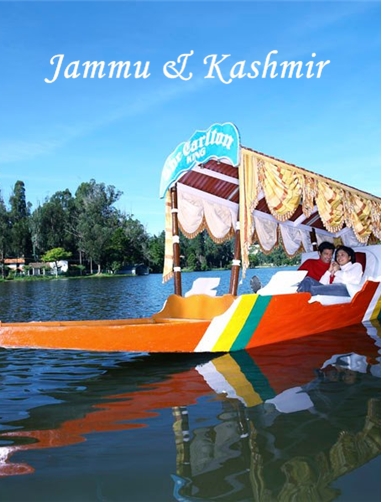
About Company
India's Best Tourist Destinations
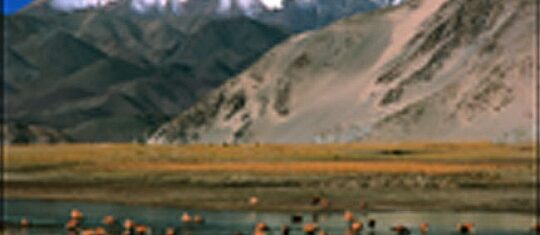
FROM $355
A distinctive region in the Jammu & Ladakh state, Ladakh is a vast highland desert lying between the Karakoram and the Himalayan ranges. The region is now organized into two districts: Leh and Kargil. Situated at the apex of a triangular plateau formed by the Indus, at an altitude of 3500meters above sea level is Leh – the biggest oasis of the mountain region and the heart of Ladakh. The city is a great tourist attraction for the foreign tourists especially during the Hemis Festival - the birthday of Guru Padmasambava, founder of the red sect of Buddhism in Ladakh. Ladakh is the abode of rare Kiang & highland Yak. Leh its capital city lies at the Tri junction of the historic silk route from Sinkiang to West Asia and to the plains of India. Altitude: 3500 meters, Climate: (deg C)-Summer – Max, Min, winter – Max, min, Best Season: May to November. Places Of Interest: At Leh: Leh Khar Palace, Leh Monastery, Leh Mosque, Tsamo Gompa. At Kargil: Kargil has beautiful Imambaras at Trespone and Sankho representing Turkish architecture. Attached to these Imambaras there are famous Arabic and Persian speaking Muslim divines known as ghas. Excursions: Mulbak Monastary- 190 km, Lamayura- 125 km, Alehi Gompa- 135 km, Likir Gompa- 140 km, Phiyang Gompa- 20 km, Spitak Monastary- 8 km, Snaker Gompa- 3 km, Shey Palace Monastary- 15 km, Thiksey Monastary-19 km, Hemis- 49 km.
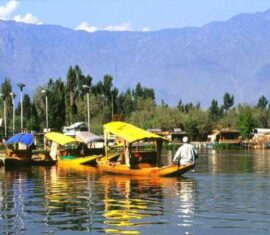
FROM $356
Kashmir is situated at the extreme north of of India. Kashmir is known all over the world as "The Paradise On Earth"ť. You will find the people themselves have a natural charm, always friendly and helpful. You enter a new civilization of gentleness beauty and peace, with all the modern amenities of accommodation and transport and much more that you will discover for yourself. Switzerland of Asia" Kashmir is World famous for its beauty from ages old and one of the Great Mughal Princes has praised its beauty by calling it a " Paradise on earth!" The Valley of Kashmir is full of the mighty mountains, Lush Greenery , blossoms of pinks , whites, yellows and flowers of all the rarest varieties. Rainbows spread across the blue skies. Meadows are spangled with daisies , flower beds with pansies, primroses, hyacinths and daffodils grow all over. Almond, cherry, apples strawberries are in abundance. Rivers, Lakes, snow-caped mountains, dense forests, Hill stations you can't think of any heavenly beauty which is missing in this piece of heaven ! Srinagar: Srinagar is at the North of Delhi via Pathankot and Jammu. It is on both the sides of River Jhelum and is the summer capital of Jammu and Kashmir. The God has graced this city with such a beauty, that it is often called "Venice of the Orient"ť. Situated amid clear lakes and lofty mountains makes it a valley of joy. The floating gardens of Dal Lake are the famous attraction of city. Enter a houseboat and you are instantly transported to another world. Area: 103.3 sq. km., Altitude: 1,730 meters, Climate: (deg C)-Summer- Max.29.5, Min.10.6; Winter- Max.7.3, Min.-1.9, Rainfall: 529 mms (Mid June to Mid September), Clothing: Summer- Cottons/Tropical; Winter- Heavy woolens, Best Season: Throughout the year, though winter months are quite cold, Languages Spoken: Kashmiri, Urdu, Hindi, English. Places Of Interest: Pather Masjid, Shah Hamdan Mosque ,Jamia Masjid, Hari Parbat Fort, Nagin Lake, Hazratbal, Nishat Bagh (Garden), Shalimar Bagh, Harwan, Cheshma Shahi, Pari Mahal, Shankracharya Temple, Dal Lake and Shri Pratap Singh Museum at Lal Mandi. Excursions: Pampore-13 km. (The only place in the world, where saffron is grown), Mattan- 61 km, Martand- 64 km, Achabal- 58 km via Anantnag, Kokernag- 70 km, Verinag- 80 km, Daksum- 85 km, Yusmarg- 40 km, Kounsernag Lake- 11 km, Manasbal- 32 km, Burzahon- 24 km, Ganderbal- 19 km, Wular Lake- 60 km, Charari-Sharif- 30 km, Dachigam National Park- 21 km
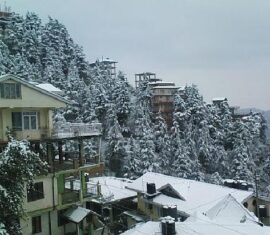
FROM $357
Situated in North India, Himachal Pradesh (Abode of Snow) is surrounded by Jammu & Kashmir on the north; Punjab, Haryana, Uttar Pradesh to the south; Uttaranchal to the south east and the Chinese territory of Tibet to the east. The state is mostly covered by the low Shivalik hill range towards the south and the dramatically high trans-Himalayan ranges as you go north. Thus you can proceed from hill-town Dharamsala in the south, at 1700m, to Lahaul-and-Spiti, the northernmost district, at 6500m. This geography and the resultant cool-to-snowy climate, define Himachal's tourist attractions as well; in fact, tourism and apple-growing run the economy of the state. Sutlej, Beas, Ravi, and Parbati are the main rivers. Given its mountainous nature, Himachal can best be understood in terms of its valleys. In the southern Kangra valley, Dharamsala and sister town McLeodganj are the focus of the Dalai Lama's Tibetan government-in-exile. In western Himachal lies Chamba Valley, with Dalhousie, a British-time hill station. Towards the east, all the way to Tibet lies the Kinnaur region, which was off limits for tourists till 1992 and contains villages and lifestyles that are still untouched by modernity. In the centre, the Kullu valley is famous for its apples, producing about 9000 truckloads of them every year. Here, Manali town is a good base for adventure sports such as paragliding, skiing, river rafting and trekking. December-March are good months for winter sports or to see the snow. The northernmost Lahaul-Spiti district is isolated, snow-bound terrain accessible only between July-October, with some well-preserved 1000-year old Buddhist monasteries and culture. Himachal's capital Shimla, developed by the British in the mid-19th century as a hill station that helped them escape hot summers, is full of colonial architecture and churches. Shimla makes a good base for less-crowded hill destinations such as Chail, Kufri, Narkanda, or Kasauli, all located at comfortable altitudes of 2000-2750 metres. Shimla In the days before independence, Shimla was the most important British hill station, and in the summer season became the summer capital. The British in 1819A.D first discovered Shimla, but it was not until 1822 A.D that the first permanent house was erected and not until many years later that Shimla became the summer capital. The name Shimla is derived from the Himalayan Goddess Shamla a synonym of Kali. Dalhousie Dalhousie is named after the British Governor General of the 19th century Lord Dalhousie. The town's height varies between 1525m and 2378m and is surrounded by varied vegetation. Dalhousie has charming colonial architecture, including some beautiful churches. The spectacular snow-covered Dhauladhar Mountains are also visible from this enchanting town. Chamba Chamba, the land of antiquity, art and scenic beauty, is a wonder in itself for every visitor. Situated at the height of 996 m. above sea level on the south bank of the Ravi River, the ancient Pahari capital was founded in 920 A.D. by Raja Sahil Verma, who named it after his favorite daughter Champavati. Chamba valley is noted for the magnificence of it's scenery-touching the fringe of the Shivaliks and having three well-defined snowy ranges, the Dauladhar, constituting the outer Himalayas, the Pir Panjal or the mid Himalayas, and the Zanskar range or the inner Himalayas. Dharamshala Set against the backdrop of the dramatic Dhauladhar Mountains, Dharamshala is perched on the high slopes in upper reaches of Kangra Valley. It is charming town with elegant bungalows nestling in thick coniferous forests. Dharamshala is also the home of Dalai Lama, spiritual head of Buddhists. Little Lhasa is an enchanting world where spinning prayer wheels and fluttering prayer flags spread the message of peace and universal harmony. Kullu Valley Kullu was once known as Kulanthpitha, which means the end of the habitable world. Beyond rose the forbidding heights of the Greater Himalayas, and by the banks of the shining river Beas, lay the fabled 'Silver Valley'. The 'Silver Valley' has nature's treasures that lie carelessly scattered as flowers on the high meadows. The Valley of Gods, as the Kullu Valley has come to be known, if perhaps the most delightful region in the Western Himalayas. Situated on the banks of the river Beas, Kullu, the headquarters of the district, serves as a nerve centre of the valley and is the starting place for a number of treks. Manali Manali is the Northern end of the Kullu Valley and is the main resort in the area. It is beautifully situated and there are many pleasant walks around the town. Surrounded by towering peaks at arm length, Manali’s major asset is its proximity to the snowline, never more than few hours drive from the town nestling at comfortable 2050meters. It is the center of the flourishing orchard industry a popular honeymoon destination and trailhead for numerous treks. Kinnaur, Spiti, Lahaul Lahaul and Spiti are two remote Himalayan valleys of Himachal Pradesh lying on the Indo-Tibet border. Strange, exciting, primitive, these valleys are incomparable in mountain scape, in the rugged beauty of their rocky escapements and the splendor of their snow covered peaks. Kinnaur is one of the most scenic but less known districts of Pradesh Located on the Indo-Tibetan border, it is surrounded by Tibet to the east, Garhwal Himalayas to the south, Spiti valley to the north and Kullu to the west. The Satluj River, which rises on the southern slopes of Kailash Parbat near Mansarovar in Tibet, flows through the Kinnaur valley.
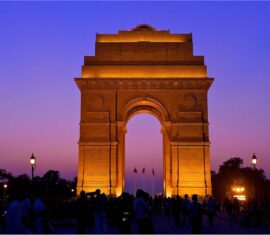
FROM $358
Delhi. The Heart of India Delhi Known For Enriched Tapestry of Ancient and Modern India and this is where it all begins and also ends. Delhi has two parts: New Delhi, India's capital and the seat of government, is a modern city, offering wide tree-lined boulevards, spacious parks and the distinctive style of Lutyens' architectural design; 'Old' Delhi, on the other hand, is a city several centuries old, teeming with narrow winding streets, temples, mosques and bazaars. Must sees include the Red Fort and the nearby Jama Masjid (India's largest mosque) both built in the mid-17th century at the height of the Moghul Empire. Also of note is the Qutab Minar's soaring tower built in 1193 by Qutab-ud-din immediately after the defeat of Delhi's last Hindu kingdom. At the base of the tower is the Quwwat-ul-Islam Mosque built in the same period using stone from demolished Hindu temples. Delhi attracts the finest musicians and dancers offering an ideal opportunity to hear the sitar, sarod and the subtle rhythm of the tabla, and to see an enthralling variety of dance forms, each with its own costumes and elaborate language of gestures. Theaters and cinemas show films from all over India, and the city has some of the country's finest restaurants offering many styles of regional cuisine. Places of Interest: Moghul Monuments: Red Fort ("Lal Qila"), Kabuli or Khuni Darwaza, Feroz Shah Kotla, Qutub Minar, Tughlaqabad, Nizamuddin Aulia, Humayun's Tomb, Lodi's Tomb, Safdarjung's Tomb, Jama Masjid, Jantar Mantar. British Monuments: India Gate, The Secretariat Complex, Rashtrapati Bhavan & Mughal Gardens, Parliament House, Teen Murti House and Connaught Place. Excursions: Badhkal Lake-32 km, Ballabgarh-36.8 km, Karnalake-132 km, Dabchick- 92 km, Dasna- 40 km, Dhanaa- 41 km, Dharudara-70 km, Hindon- 19 km, Hodal- 90 km, Maur Bund- 32 km, Okhla-11 km, Sardhana- 24 km, Sohna-56 km and Suraj Kund- 18 km. Other Monuments: The Supreme Court, Raj Ghat, Shanti Vana, Vijay Ghat, Ladakh Buddha Vihar, Bahai's temple, Vigyan Bhavan, Diplomatic Enclave. Known For Enriched Tapestry of Ancient and Modern India and this is where it all begins and also ends. Delhi has two parts: New Delhi, India's capital and the seat of government, is a modern city, offering wide tree-lined boulevards, spacious parks and the distinctive style of Lutyens' architectural design; 'Old' Delhi, on the other hand, is a city several centuries old, teeming with narrow winding streets, temples, mosques and bazaars. Must sees include the Red Fort and the nearby Jama Masjid (India's largest mosque) both built in the mid-17th century at the height of the Moghul Empire. Also of note is the Qutab Minar's soaring tower built in 1193 by Qutab-ud-din immediately after the defeat of Delhi's last Hindu kingdom. At the base of the tower is the Quwwat-ul-Islam Mosque built in the same period using stone from demolished Hindu temples. Delhi attracts the finest musicians and dancers offering an ideal opportunity to hear the sitar, sarod and the subtle rhythm of the tabla, and to see an enthralling variety of dance forms, each with its own costumes and elaborate language of gestures. Theaters and cinemas show films from all over India, and the city has some of the country's finest restaurants offering many styles of regional cuisine.
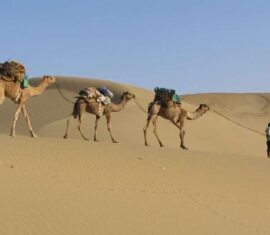
FROM $359
The land of Rajputs of olden times, the golden glow of desert landscape, the shimmering emerald water surrounding the medieval lakes, grand palaces, bustling bazaars, endless desert sands, teeming wild & bird life are as much a part of Rajasthan. As the ships of the desert who sail majestically amidst the tranquility, colour and warmth all around. It is the land of brave people with a royal touch in their lifestyle. It is a land of superlatives where everything is breathtakingly beautiful...! Rajasthan is the Land of Royalty. Its imposing forts and grand palaces remind one of the sophisticated lifestyles of the Maharajas. History abounds in Rajasthan, a history replete with tragedy, romance and valour- of men for whom bravery was the code of conduct, and women whose beauty often led to battles being fought over them. Bearing testimony to this are some of the most magnificent and imposing forts and palaces, which even today reflect the richness of living, and conjure up visions of long-lost prosperity and splendor. Rajasthan is the second largest state of India and is one of the few states that show a great contrast from one area to another. This disparity is noticeable in respect of climate, soil, vegetation, mineral resources etc. The land that revives age old legends of brave Hadi Rani of the beautiful Padmini of Chittaurgarh, the pious Mira Bai, and the love stories of Dholamaru and Moomal , Mahendra of Marwar. Rajasthan, the land of prince and princess has the most amazing legends of devotion, romance and heroism. It offers the visitors: both quite moments of relaxation and adventure in the desert state. Jaipur Widely known as the "Pink City", Jaipur was color washed pink to welcome Prince Albert, the consort of Queen Victoria of England who visited India in 1883 A.D. The city was founded in 1727 A.D by one of the greatest ruler Jai Singh II. Jaipur is surrounded by hills on three sides, crowned by formidable forts and majestic palaces, mansions and gardens. Jaipur is the only city in the world, which is sub-divided in to nine rectangular sectors symbolizing nine divisions of universe. Jaipur is the first planned city designed in accordance with "Shilpa Shastra"- epochal treatise of Hindu architecture. Places Of Interest: Hawa Mahal, City Palace, Jantar Mantar, Amber Fort, Birla Mandir, Sisodia Gardens, Birla Planetarium, Jal Mahal, Nawab Ki Haveli, Galtaji's Temple. Ajmer Founded in 1100 AD by Aijpal Chauhan, Ajmer derives its name from `Ajaya Meru' the invincible hill, at the foot of which the present city stands. Ajmer owes its composite culture to the reign of many dynasties that came, ruled and left, leaving behind indelible marks of their culture and traditions. Ajmer is situated in a valley surrounded by the Aravali hills, 131km west of Jaipur. "Dargah Khwaja Sahib" is one of the holiest Muslim shrines in the country. The city has some splendid masterpieces of Indo-Islamic architecture. Pushkar 11km west of Ajmer, along the picturesque Pushkar Lake lies the tranquil town with deep religious significance. The biggest attraction is being the temple of Lord Brahma. Pushkar fair is one of the largest and colorful cattle fair in the world. Season: September to April. Places Of Interest: Adhai-Din-Ka-Jhonpra, Ana Sagar Lake, Circuit House, Dargah of Khwaja Moinuddin Chishti, Soniji ka Nasiyan, Mayo College, Swami Dayanand Saraswati Smarak, Taragarh Fort and the Museum. Udaipur On the banks of the shimmering lake Pichola, is one of the most romantic cities of Rajasthan. Nestled among the lush hills of the Aravallis, it has inevitably been dubbed the 'Venice of the East'. It is a kaleidoscope of fairy-tale palaces, lakes, temples, gardens and narrow lanes strewn with stalls, carries the flavor of the heroic past, epitomizing valor and chivalry. Founded in 1568 A.D by Maharana Udai Singh, the city is a harmonious Indian blend of whitewashed buildings, marble palaces, lakeside gardens, temples and Havelis. According to the legend, Maharana Udai Singh, the founder was hunting one day when he met a holy man meditating on a hill overlooking the Lake Pichola. Maharana followed the advise of the hermit and founded the city. The marvelous architecture of the palaces is spell bounding. Mount Abu The only hill station of Rajasthan, crowning at the highest peak of the Aravali hills at altitude of 1220 meters. It is one of the prettiest hill stations in the country. Mount Abu was dedicated to Lord Shiva before it became a Jain Pilgrimage Centre. The biggest draw for Mount Abu is the Dilwara Jain Temple for its carvings. The hill boasts of a rich vegetation and thick forest. It stands out like an oasis in arid environs. Best Season: Mid-March to June and Mid-September to December. Places of Interest: Adhar Devi Temple, Andhra Point (Honeymoon Point), Dilwara Jain Temple, Gaumukh, Nakki Lake, Red Temple, Shri Raghunathji Temple, Sunset Point, Traver's Tank. Jaisalmer Jaisalmer, the city of the golden fort is a fantasy in yellow sandstone in the heart of the Thar Desert. Rawla Jaisal, a Bhatti Rajput King, founded the city in the year 1156 A.D. Perched atop the Trikuta Hill, it stands tall against miles of gleaming sand. The sunset has a peculiar glow here. As the night descends, the sky goes up in flames, which fade leaving a few embers, till it becomes black. A breathtaking sight indeed! Every house, here, is exquisitely carved, having filigreed work all over. These houses date back to 12th 15th century. And hence Jaisalmer is called 'the Museum city'. Altitude: 225 meters, Climate: (deg C)-Extremely hot summers with maximum temperature touching 47 C. Cold winters min 1C, Rainfall: 30 cm ,Clothing: Summer Tropical Winter Woolen, Best Season: July to March. Places Of Interest: Golden Fort with 99 bastions, Jain Temple, Gyan Bhandar, Salim Sing Ki Haveli, Patwon ki Haveli, Nathumal ki Haveli & Amar Sagar, Mool Sagar, Gadisar Lake, Jain Temples. Bikaner This is 500-year-old town standing still in time. The rulers here built beautiful forts that echo of opulence and images of monsoon clouds in this dry land. The wealth of its architectural heritage lies in its forts, palaces and temples, magnificent creations in red and yellow sandstone, are living. Here is a temple where rats are held sacred. Today the city is known for flourishing industries of food, wool and camel breeding. The genesis of Bikaner dates back to 1488A.D, when a Rathore prince, Rao Bikaji, son of Rao Jodhaji of Jodhpur, chose a barren wilderness called "Jangladesh" and transformed it to a charming city called Bikaner, after the founder’s name. Not only do the traditions come alive here in colourful bazaars and Havelis, but Bikaner is also famous for the best riding camels in the world. Altitude: 237 meters, Rainfall: 44 cms, Best Season: July to March, Climate: Summer Mean Max. 44 deg. C Mean Min. 28 deg.C Winter Mean Max. 23.2 deg.C Mean Min. 10 deg.C, Clothing: Summer Light tropical or cotton Winter Woolen. Places Of Interest: Junagarh Fort, Lalgarh Palace, and Ganga Golden Jubilee Museum, Bhandeshwar Jain Temple. Ranthambhor National Park (Sawai Madhopur) The town is experience of royal past and encounter with majestic tiger. The area became a hunting preserve of Maharaja Sawai Madho Singh I of Jaipur in A.D. Sprawling over a undulating terrain of Aravali and Vindhyan ranges is wilderness of Ranthambhor National Park. The park is one of the finest Tiger Reserve of India. A system of three artificial lakes enhances beauty of the park. Best Season: November to May Places Of Interest: Amreshwar Mahadev- 8 km, Mahavirji-110 km, Kela Devi- 125 km, Shivad- 30 km, Khandar- 60 km, Rameshwaram- 90 km in Khandar Area. Alwar Alwar is nestled between clusters of small hills of the Aravali range. It is the gateway tone of the finest wildlife sanctuary - Sariska that is an excellent home of tigers, birds and variety of animals. Apart from its long history, the city has a rich heritage with some beautiful lakes and picturesque valleys thickly wooded in parts. The medieval fort crowning a scarped hill, over looks the town below. Rao Pratap Singh founded Alwar in 1775 A.D. Area: 8.2 sq. km., Altitude: 268 meters, Climate: Summer Max. 37 Deg C Min. 24 Deg C Winter Max. 31 Deg C Min. 11 Deg C, Rainfall: 63.5 cms., Best Season: October to March. Places Of Interest: City Palace, Museum, Puran Vihar, Sagar (tank) Bala Fort, Vinay Vilas Mahal. Bharatpur - Deeg Bharatpur, along with Deeg and Dholpur, holds an important place in the history of Rajasthan. Visited mainly for Keoladeo Ghana National Park, Bharatpur is a small town. Located near the world famous bird sanctuary amidst 40 acres of landscape environs, the Laxmi Villas Palace was built in 1899, for the younger brother of the Maharaja of Bharatpur. The architecture is a blend of the Mughal and the Rajputana styles. Today government offices and a museum occupy most of the forts. The museum in the fort has some interesting sculptures, collected from various ancient and early medieval sites in nearby areas. Area: 22 sq. km., Altitude: 205 meters, Climate: Summer Max. 45 C Min. 37 C Winter Max. 31 C Min. 21 C, Best Season: October to February. Places Of Interest: Keoladeo Ghana Sanctuary, it is famous for rare avian species. Bharatpur Fort, Government Museum, Bharatpur Palace. Kota Rao Madho Singh, who was nominated as the ruler by the Mughal emperor Shahjahan, formed Kota in 1631 A.D. The city is known for impressive forts, opulent palaces and splendid temples dating back over several centuries retain the past glory with an exciting contrast to the modern edifices and industries. Standing over the river Chambal is commanding 'Garh-fort Palace', dating back to the time when Kota was a part of Hada Rajput kingdom. Places Of Interest: City Palace, The Fort overlooking Chamba River, Jagmandir - artificial water reservoir, Brig Vilas Palace Museum, Rao Madho Singh Museum and Darrah Wild Life Sanctuary - 50 Km away from Kota. Bundi This picturesque little town in Rajasthan, the atmosphere of which more or less remains, fills a narrow valley in the oldest hills in India: the Aravallis. This walled town, 37 km north of Kota, lies in the north of the former Hadaoti state, shielded on the north, east and west by jagged outcrops of the Vindhya range. Bundi, renown for its intricate paintings and murals, made a perfect capital of a major princely state during the heyday of the Rajputs. According to legend, back in the 12th century, restless young nobles of the warrior Chauhan clan conquered the Bhil and Meena tribals of these lands.. Kota was a part of Bundi until its separation in 1624 at the instigation of the Mughal emperor, Jehangir. Places Of Interest: Taragarh Fort or Star Fort, Palace, Chitra Mahal, Phool Sagar Palace, Nagar Sagar Kund, Sukh Mahal, Shikar Burj, Rani Ki Baori.
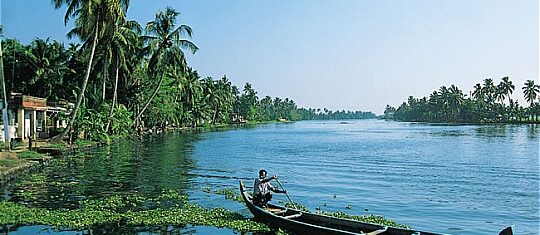
FROM $360
A tiny emerald land of 3,702 Sq. Km. on the west coast of India, with its natural scenic beauty, attractive beaches, churches and temples, famous for it's architecture, feasts and festivals and above all hospitable people with a rich cultural milieu, has an ideal tourist profile. Econced on the slopes of the Western ghats (Sahyadri ranges), Goa is bounded on the North by Sindhudurg district of Maharashtra, on the East by Belgaum, on the South by Karwar Districts of Karnataka, and on the west by Arabian Sea. It's rivers -Tiracol, Chapora, Mandovi, Zuari, Sal and Talpona, which are navigable throughout the year, have their origin in the Sahyadri ranges and flow westward into the Arabian sea 60kms. away, breaking the long coastline covering a length of 105Kms. into the enchanting estuaries and bays which mark off idyllic palm-fringed beaches like - Arambol, Vagator, Anjuna, Baga and Calangute in the North, and Colva, Cavelosim, Betul and Palolem in the South. North Goa This is, mostly the lively part of goa but there are plenty of away from it all hotels and resorts too. Tourism started here in the 60's with hippies, most of whom have now disappeared. Maybe they've just cut their hair. Who Knows?. It is blessed with some of the most beautiful beaches in the world. Places of Interest Anjuna Beach: (18 kms from Panaji). A popular beach area adjacent to Chapora fort. In Anjuna there is magnificent Albuquerque mansion built in 1920, flanked by octagonal towers and attractive Mangalore tiled-roof. ARAMBOL Beach (50 kms from Panaji). A unique beach in the North Goa, it is a rocky and sandy beach and much sought after. It has a sweet water pond right on the shore. ARVALEM WATERFALLS - BICHOLIM 9 kms. south of Bicholim town at Arvalem, it is a 24-metre high waterfall, best viewed after the monsoons. The ancient caves in the vicinity adds a touch of antiquity to this picturesque place, which finds a major attraction for the film makers as a favourite shooting spot. Calangute Beach(16 kms from Panaji). It is the most popular holiday resort in Goa. Excellent accommodation facilities are available, particularly at the tourist resort and cottages. Sinquerim Beach (16 kms. from Panaji). The southern most beach of the Calangute stretch, this beach has good accommodation and water sports facilities. SHRI BRAHMA TEMPLE - VALPOI 7 kms. from Valpoi, in the village of Brahma Carambolim, this shrine belongs to the 5th century A. D. It is one of the few temples dedicated to Lord Brahma found in India. MAYEM LAKE - BICHOLIM 35 kms. from Panaji, this artificial lake surrounded amidst rolling green hills is an ideal picnic spot. Good accommodation facilities are available in Cottages. Boating is available in the lake. TERACOL (TIRACOL) FORT It was a key Portuguese fort for the defence of Goa, on the north side of the estuary of the Tiracol river, the most northern boundary of Goa. VAGATOR Beach (22 kms from Panaji) It is a popular beach dominated by Chapora Fort to the north, on its imposing headland. To the south of Vagator is Calangute beach. Baga Beach (18 kms. from Panaji). It is at the northern tip of a wonderful 7 kms. stretch along the coastal North Goa. Accommodation including star hotels are available throughout this stretch. MORJIM Beach(40 kms. from Panaji). In the mouth of the Chapora river and facing the famous Chapora fort, this is another famous beach of northern Goa. BONDLA FOREST 50 kms. from Panaji and 38 kms. from Margao, it is one of the three wildlife sanctuaries of Goa. More than a sanctuary it is an ideal jungle resort, a major attraction for school going children and nature lovers. Its mini zoos, sprawling deer park in natural habitat, botanical and rose gardens attract people throughout the year. CHAPORA FORT This fort was built by the Adil Shah of Bijapur on the southern headland of the Chapora river. It was known as Shapur and is now mostly ruined. Central Goa It is an ideal base to explore Goa and is very near the Capital Panjim. Old Goa is a heritage of the 16th century. The Patron Saint of Goa is St. Francis Xavier. His umembalmed body can be viewed at the Basilica of Bom Jesus. The Se Cathedral has a fantastic gilt altar.There are also many interesting Hindu Temples like Mangeshi and Shanta Durga Temples Places of Interest DONA PAULA (7 kms from Panaji). An idyllic picturesque spot, Dona Paula commands a fine view of the Zuari river and Mormugao Harbour. Water Scootering facilities are available here. SALIM ALI BIRD SANCTUARY - CHORAO, PANAJI Spread over 1.78 sq. kms. and located at the western tip of the island of Chorao along river Mandovi near Panaji, it is fully covered with mangrove species. Varieties of local as well as migratory birds frequently visit the area. OUR LADY OF IMMACULATE CONCEPTION It is one of the oldest buildings in Panaji. Founded before 1541 and rebuilt in 1619, it is the focal point of the city's religious feasts. MIRAMAR Beach (Gaspar Dias, 3 kms from Panaji). A lovely golden beach of soft sand girdled with palm trees facing the blue Arabian Sea, is the nearest to Panaji. SHRI ANANT DEVASTHAN - SAVOI-VEREM This unique temple is situated at Savoi-Verem village in Ponda taluka. The deity carved in black stone is Lord Vishnu (the God of Preservation) who is in his Anantashayya (a sleeping position where the Lord rests on the multi-headed snake king Seshnaga, whose heads shelter the head of the Lord like an umbrella). SIRIDAO Beach(8 kms. from Panaji). Near Goa Velha in Tiswadi taluka near the mouth of the river Zuari, it is one of the most frequented beaches of Goa for its picturesque scenery. BASILICA OF BOM JESUS Built in 16th century at Old Goa, the former capital of the Portuguese at a distance of 10 kms. east of Panaji, it is the most popular and famous of all churches in Goa. This church is connected on the southern end with the Professed House built by Jesuits in 1585 but was partially damaged in fire in 1663 and was rebuilt in 1783. AGUADA FORT 18 kms. From Panaji and situated on a headland of the river Mandovi, this strongest fort of Goa was built by the Portuguese in 1609-1612, to command the entry into the river Mandovi, in order to protect Old Goa from potential enemy attacks. South Goa The Quieter area of Goa with the exception of Colva beach, ideal for those who want to unwind and do nothing. The local village of Margao is a short taxi ride away for those in search of souvenirs and a little taste of Goan living. But essentially choose the South if you want to get "get away" from it all and just be pampered. However there are some bars, restaurants and those ever so popular "Beach Shacks" though they maybe a short taxi ride away. Places of Interest BENAULIM Beach (4 kms. from Margao). Situated at Benaulim village near Margao, it is one of the famous beaches of south Goa. COLVA Beach (About 6 kms. from Margao). Colva beach is the pride of Salcete and the only rival to Calangute by its scenic splendour. Here, sand, sea and sky blend in enchanting natural harmony unspoilt by men. It has good accommodation facilities, particularly at the tourist cottages. BHAGVAN MAHAVIR WILDLIFE SANCTUARY - MOLEM Situated along the North-East border of Goa at Molem, about one-and-a-half hours' journey from Panaji (60 kms.) along Panaji Belgaum National Highway, the Bhagwan Mahavir Wildlife sanctuary covers 240 sq. kms. of thick forest clad slopes of Western Ghats and its valleys and is the biggest of the three sanctuaries of Goa. The sanctuary is rich in wildlife. BOGMALO Beach (5 kms. from Goa Airport). Well connected by road, it offers excellent water sports facilities. CANSAULIM Beach (15 kms. from Margao). A famous beach in Mormugao taluka near Cansaulim railway station. DUDHSAGAR WATERFALLS Literally meaning 'The Sea of Milk', it is situated on the Goa-Karnataka border, at a distance of 60 kms. from Panaji and 10 kms. from Colem Railway Station. This beautiful waterfalls is accessible by train and rough road. Water plummets hundreds of feet in large volume, in cascades, forming one of the most spectacular of all natural phenomena in Goa and a lifeline of our ecosystem in one of our Sanctuaries.
